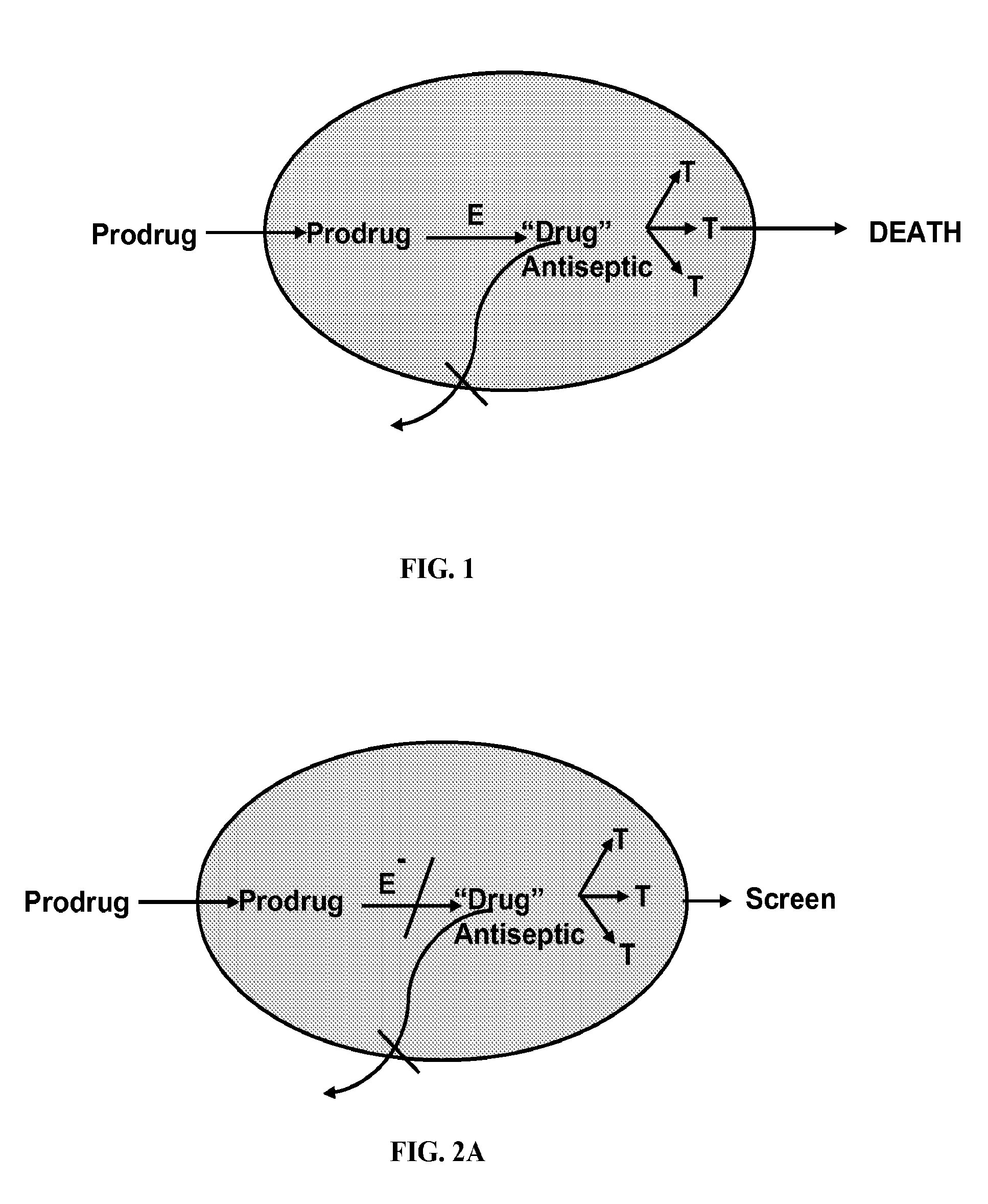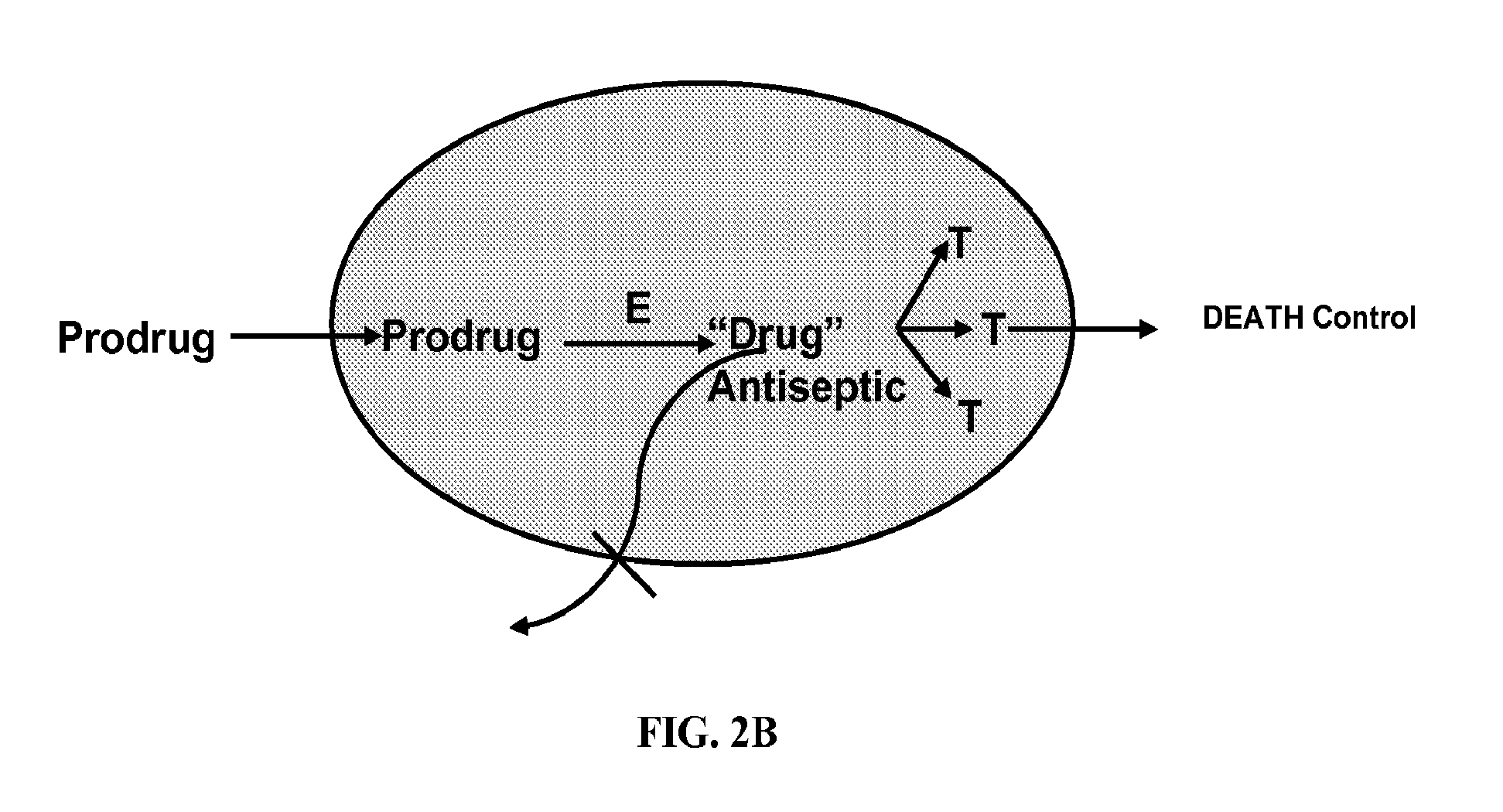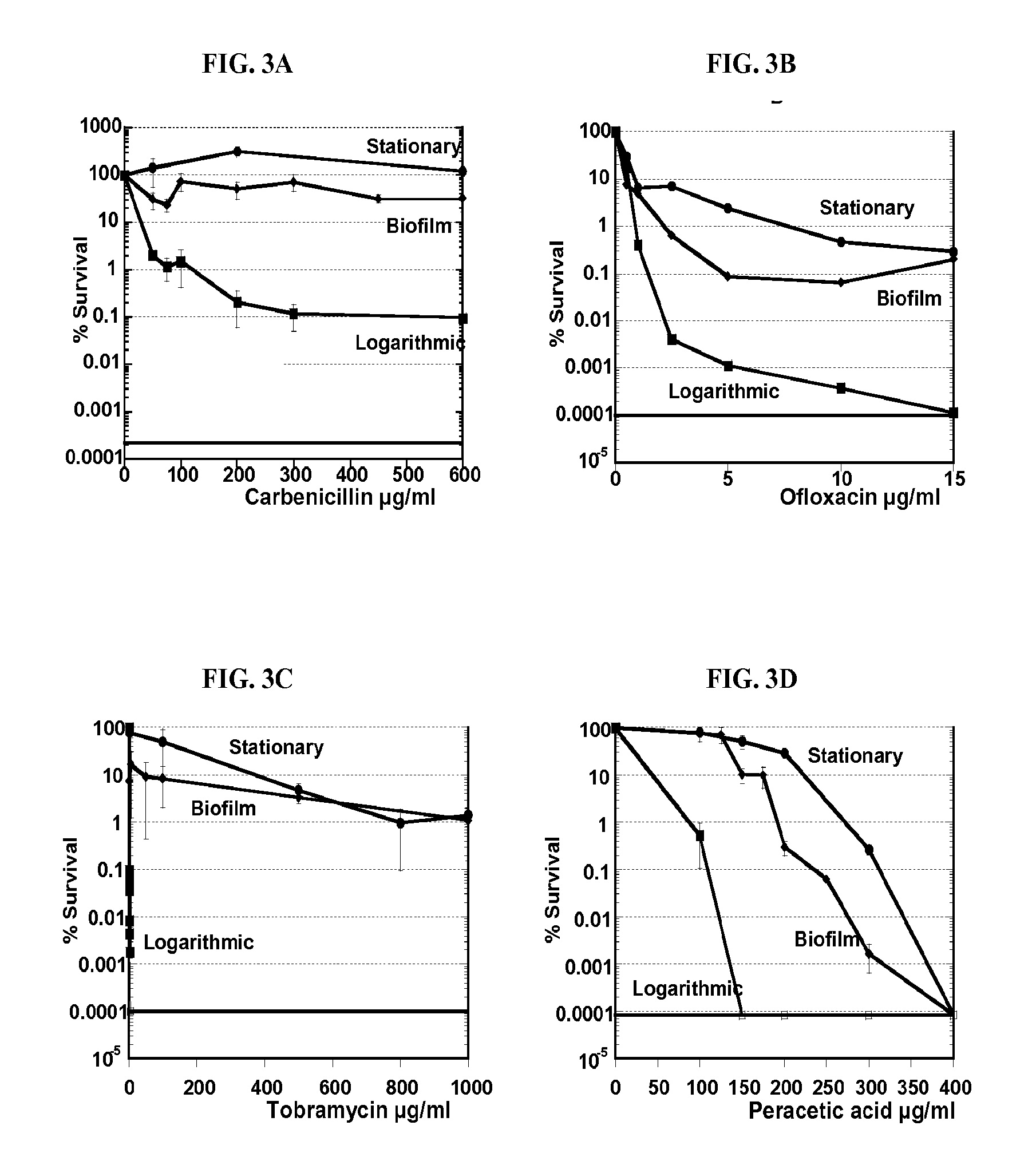Antibiotic compounds
a technology of antibacterial compounds and compounds, applied in the field of microorganism chemistry and medicinal chemistry, can solve the problems of many synthetic compounds not being able synthetic compounds have so far failed to replace natural antibiotics, etc., and achieve the effects of improving disorders, and preventing or slowing the progression of disorders
- Summary
- Abstract
- Description
- Claims
- Application Information
AI Technical Summary
Benefits of technology
Problems solved by technology
Method used
Image
Examples
example 1
Pilot Screens With Mutant Pools
[0279]Pilot screens were performed to identify compounds that have a lower activity against a bacterial strain deleted in an activating enzyme as compared to the wild type.
[0280]A complete, ordered E. coli K12 knockout library of 4320 genes and predicted ORFs (the Keio library) was used (Baba et al. (2006). Mol. Systems Biol. 2:2006.0008). The knockouts were constructed using the Wanner method with a kanamycin cassette replacing the ORFs (Datsenko et al. (2000) Proc. Natl. Acad. Sci. USA 97:6640-6645). All strains of this library were combined in a mix BacPool1) for screening. This permitted screening of the library against all strains simultaneously, instead of screening a full industry-size library against each of the individual E. coli 4×103 knockout strains.
[0281]The library mix was prepared by first culturing all strains overnight in LB medium, and then adding equal aliquots into a tube. This material was then mixed, dispensed in vials and stored ...
example 2
Secondary Screen
[0294]Once the hits are obtained from the screen, they can be verified by retesting the hit compounds against the mix and the wild type. Confirmed hits are examined further. Strains containing the activating enzymes are determined with a secondary screen against individual deletion strains.
[0295]In the secondary screen, the deletion strain lacking the activating enzyme is identified by testing against the strains of the knockout library dispensed in individual wells. This will identify the resistant strain lacking an activating enzyme.
example 3
Hit Validation Using Strains Overexpressing Prodrug Activating Enzymes
[0296]Next, the hits that verify and have reduced activity compared to wild type or no activity against strains deleted in a known or putative enzyme are validated. The rationale is to test the hit against a strain overexpressing the putative activating enzyme. Strains overexpressing activating enzymes have considerably higher susceptibility to prodrugs. It is important to note that conventional antibiotics that inhibit specific targets have increased activity against strains with diminished expression of the target, and decreased activity if the target is overproduced (Schmid (2001) in Antibiotic Development and Resistance. Hughes and Andersson (eds). New York; Taylor and Francis, pp. 197-208; Sun, D. (2001) in 41st Interscience Conference on Antimicrobial Agents and Chemotherapy Chicago: ASM, pp. 77). A prodrug hit has higher activity against a strain overexpressing an activating enzyme, and lower activity again...
PUM
| Property | Measurement | Unit |
|---|---|---|
| concentration | aaaaa | aaaaa |
| volume | aaaaa | aaaaa |
| volume | aaaaa | aaaaa |
Abstract
Description
Claims
Application Information
 Login to View More
Login to View More - R&D
- Intellectual Property
- Life Sciences
- Materials
- Tech Scout
- Unparalleled Data Quality
- Higher Quality Content
- 60% Fewer Hallucinations
Browse by: Latest US Patents, China's latest patents, Technical Efficacy Thesaurus, Application Domain, Technology Topic, Popular Technical Reports.
© 2025 PatSnap. All rights reserved.Legal|Privacy policy|Modern Slavery Act Transparency Statement|Sitemap|About US| Contact US: help@patsnap.com



